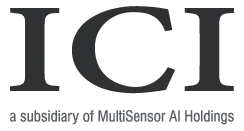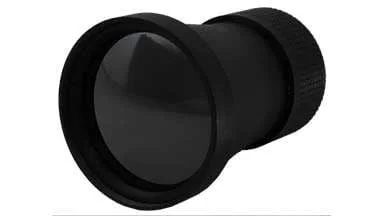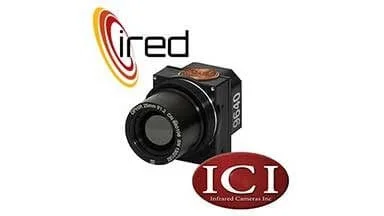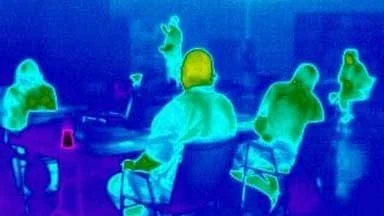Infrared cameras are changing how we see the world. From temperature screenings in workplaces to home inspections in real estate, countless professionals are now capitalizing on the benefit of IR imaging. But why? Infrared technology brings hidden treasures and lurking threats safely into an observable view.
While traditional visible-light cameras capture images of objects radiating light visible to the naked eye, an infrared camera captures what the human eye cannot see. All objects radiate energy, but some wavelengths within the electromagnetic spectrum are invisible. Detectors in an infrared camera capture a particular range of invisible energy emission (700-1000 nm) and then express each heat value (or wavelength) through a set of corresponding colors. The resulting image is called a thermography.
What is an Infrared Camera Used For?
Infrared cameras have a wide range of industry applications. Though recently, they have gained widespread international attention for their ability to perform temperature calculations in temperature screening measures, thermal imaging cameras can also help medical and veterinary professionals to identify injury and illness. Electricians and building inspectors utilize IR technology to detect deterioration, corrosion, leaks, and other potential dangers.
IR is advantageous because obstructions like fog or darkness do not limit the outcome. For example, law enforcement officers and hunters can use thermography to detect security threats or predators under the cover of night or even hidden behind objects or walls. Infrared photography also provides a level of safety as there is no direct contact necessary to obtain the measurement in potentially high-risk situations.
Do Infrared Cameras Work In the Daylight?
Infrared cameras should not be confused with night vision, which enhances visible light. Because infrared cameras measure light that is not visible, they can work in darkness as well as daylight. Some professional photographers enjoy using infrared cameras to capture artistic images because they reflect elements like colors, textures, the sky, trees, and even human subjects differently than visible light photographs. For commercial and industrial use, ICI offers numerous products that will capture the heat and energy emissions outside in broad daylight.
What Do Thermal Imaging Colors Mean?
Because infrared radiation is not visible, color palettes are convenient ways to see and understand a thermal image. Within the camera is an infrared sensor along with thousands of pixels. Each pixel captures the radiation emitted from the target area and is individually expressed in the final image. The final image shows the full temperature of every pixel — not just the average.
The color map, or palette, can be assigned and specifically tailored to give a visual representation of the different wavelength emissions. For instance, you may opt to have colder temperatures expressed by the color blue, medium yellow, and red hot. The combined readings of each pixel are processed and produces a thermal image, a vibrant RGB rendering based on the selected color map.
For example, in most thermal images, red and bright white symbolize the hottest parts of the image. Green, blue, and purple symbolize cooler temperatures.
How To Get the Best Thermal Images
While infrared cameras detect and project object temperature with extreme accuracy, there are many factors to consider in order to ensure correct data.
Not all infrared cameras are created equal. Some are designed for industrial use, while others are better suited for medical use or other purposes. Proper tools and an understanding of the equipment are essential.
You must also consider environmental conditions when utilizing infrared imaging cameras. Since the images measure radiated heat, external factors such as the sun, shadows, cold temperature, rain or windy conditions (even HVAC systems indoors) must be considered. Users should follow the ISO 13154 standard for proper implementation of medical-use cameras. Another consideration is the emissivity of an object itself, which is the rate at which infrared energy is emitted by an object. Allowing for these by utilizing settings within the camera body will help to mitigate error.
Why ICI
Infrared cameras, and the unique view of the world they offer, are growing in popularity in a number of industries worldwide. Understanding the proper use of these incredible tools is just as important as understanding the technology itself.
At Infrared Cameras Inc, we help connect customers with the proper tools for their thermal imaging needs and offer calibration services to help make adjustments for some of the factors mentioned above. Additionally, our sister company Infrared Training Institute offers a series of courses to inform and equip thermographers.
To learn more about implementing infrared cameras into your business, or for professional tools and tips, contact us or check out an upcoming ITI training course.






